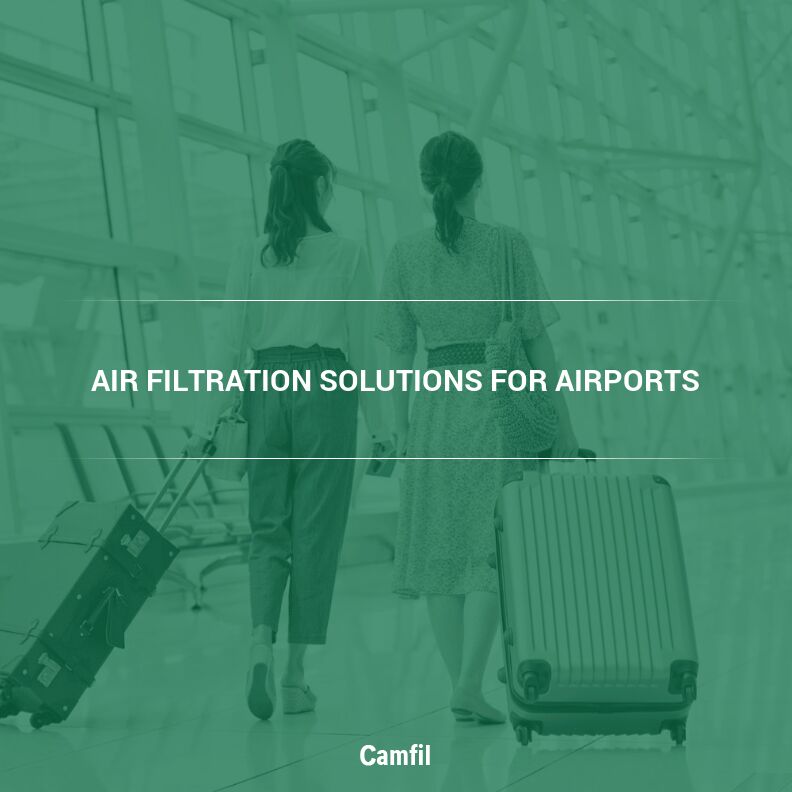
Air Filtration Solutions for Airports
23–27 minutes to read
International airports that handle millions of passengers each year deal with major air quality issues from both outdoor and indoor sources. Aircraft are the main source of outdoor airport pollution. When planes land, taxi, or take off, they release gases, volatile organic compounds (VOCs) and fine particulate matter into the air. These exhaust plumes can drift into terminal air intakes or open doors, letting pollutants enter the building and harm airport indoor air quality.
Ground support equipment, like fuel trucks and baggage tugs, adds to the mix while traffic around the airport, including cars, shuttles and buses, adds more emissions that can enter terminal entrances and ventilation systems. In crowded terminals, CO2 and VOC levels rise, sometimes exceeding recommended levels (>1000 ppm), which makes the air feel heavy and low in oxygen.
All these factors combine into a complex air quality problem. Addressing it requires coordinated efforts to reduce emissions and improve ventilation. Effective airport pollution control is important not only for protecting health but also for maintaining operational efficiency and safeguarding your airport’s reputation.
This article examines air quality challenges faced by airports, exploring the costs to health and reputation, priority areas for improvement, and effective ventilation and airport air filtration strategies that create cleaner, healthier indoor environments.
Why Airport Air Quality Presents...
Read Full Story: https://cleanair.camfil.us/2025/11/24/air-filtration-solutions-for-airports/
Your content is great. However, if any of the content contained herein violates any rights of yours, including those of copyright, please contact us immediately by e-mail at media[@]kissrpr.com.